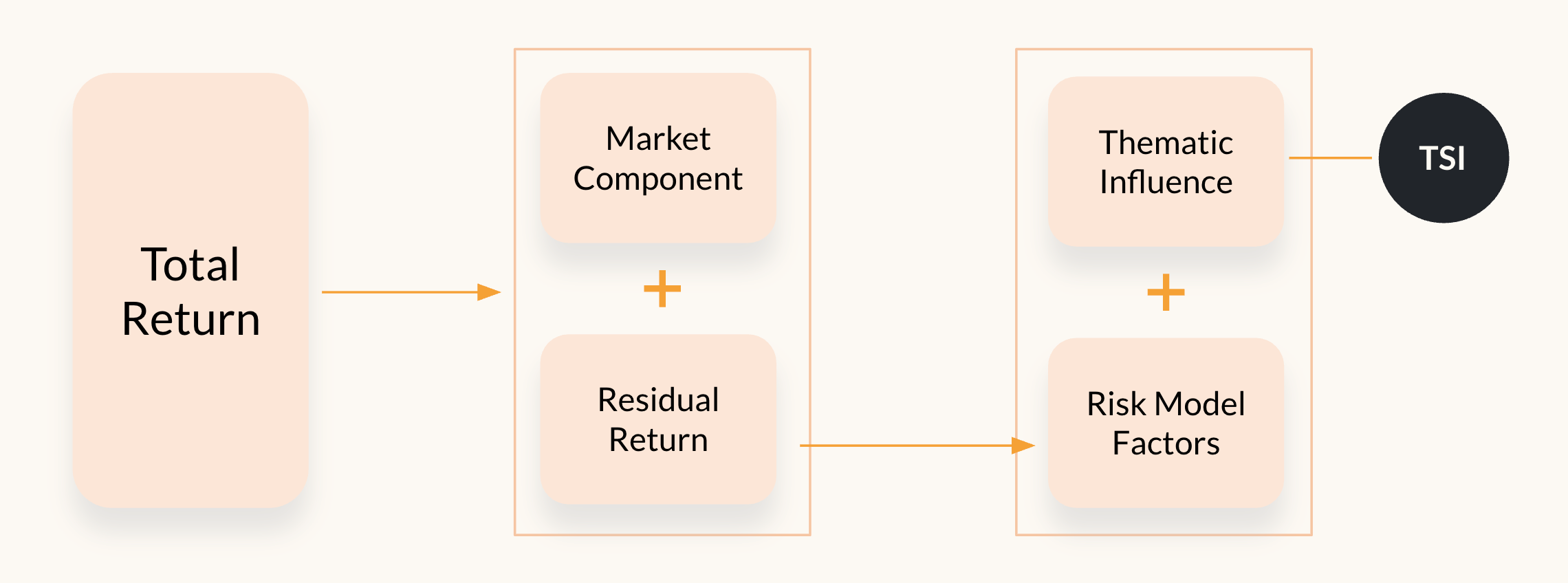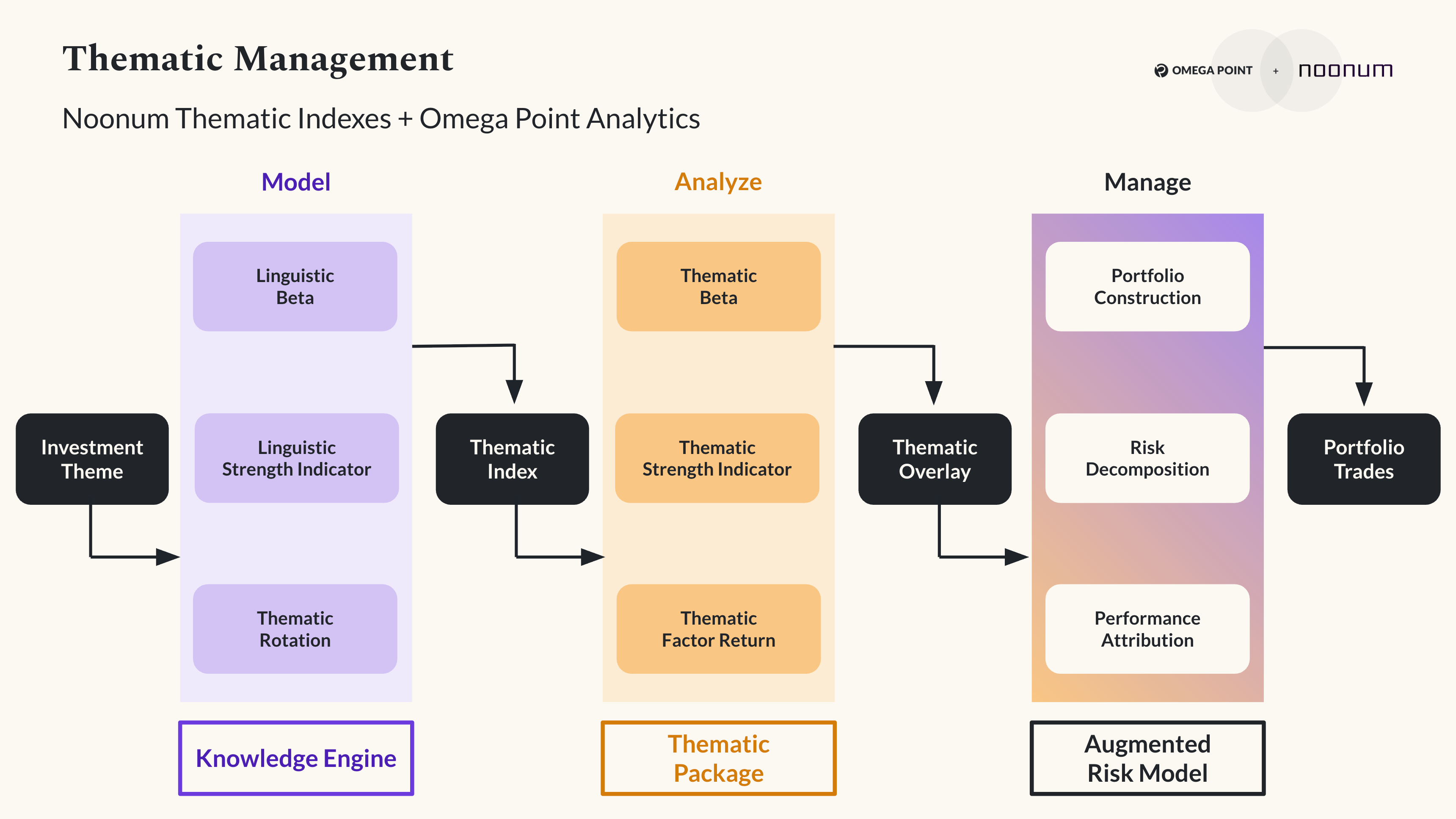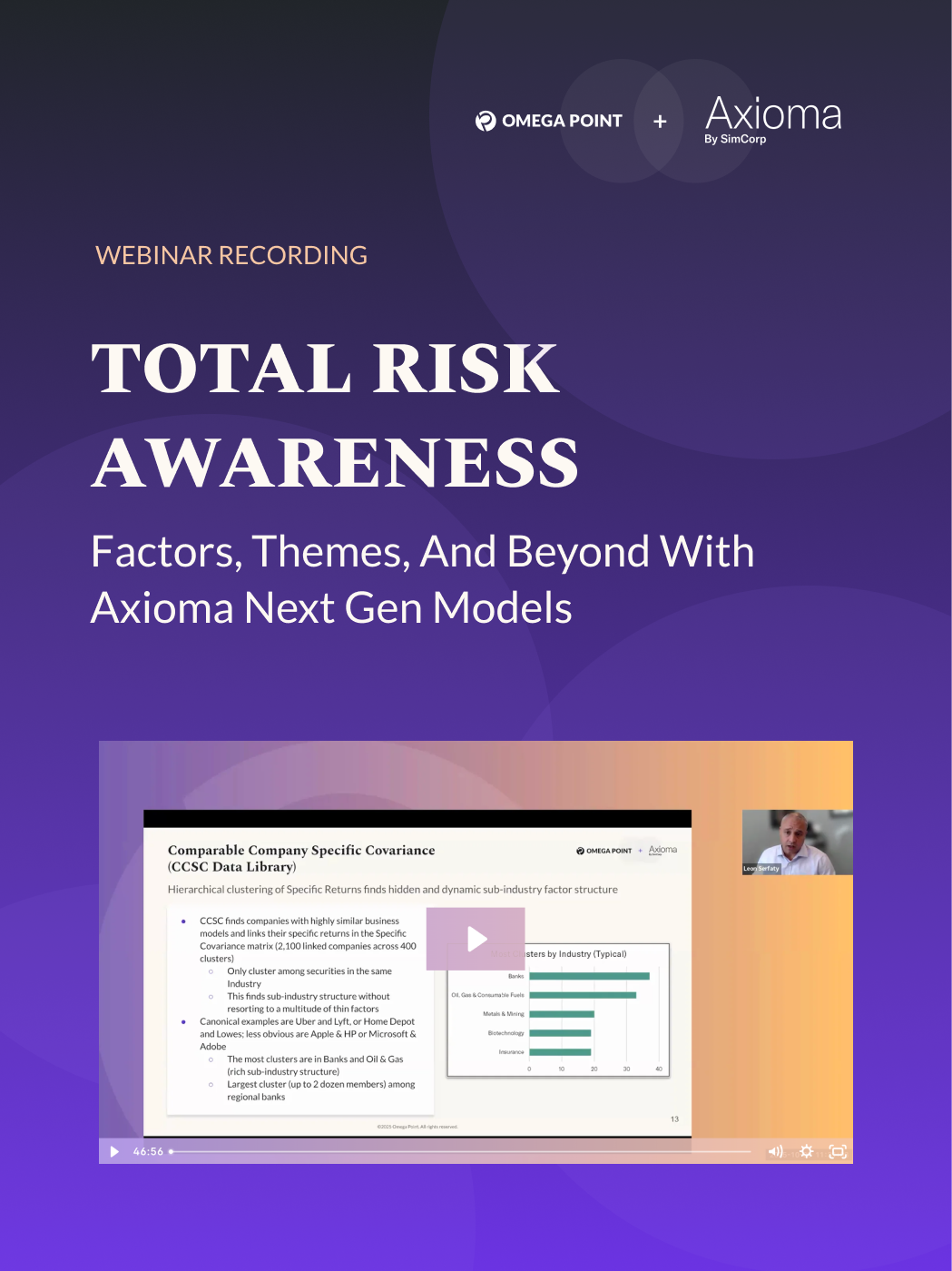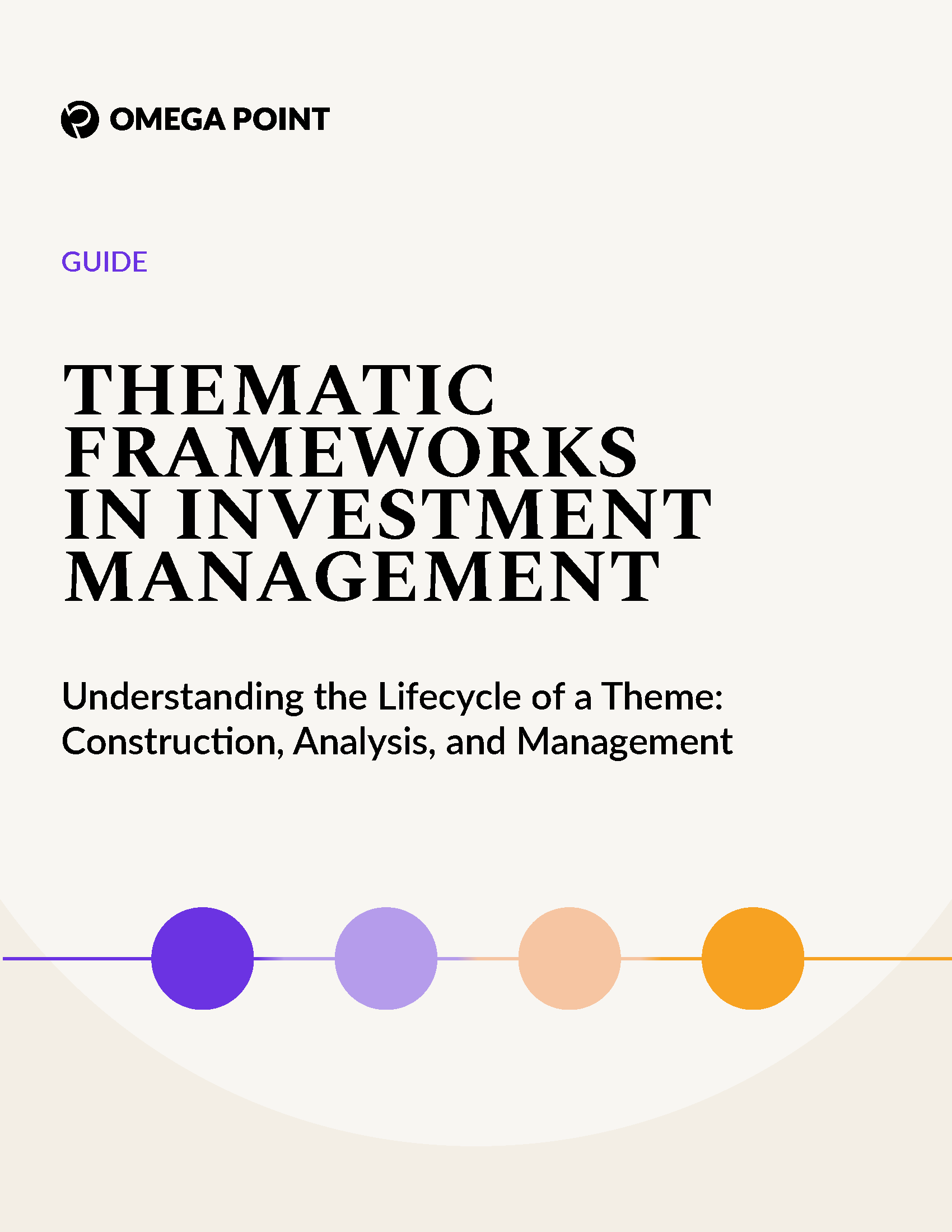Beyond Factors: Strategic Hedging for Emerging Market Themes
Portfolio risk management has evolved considerably over the past couple of decades, chiefly driven by the adoption of multi-factor risk models that allow investors to decompose the sources of risk in their portfolios. Today, we are watching as the discipline advances beyond the scope of traditional factor models, which focus on static, well-defined factors such as beta, size, value, and sector exposures.
While these models remain an essential foundation for understanding portfolio risk, they are not designed to capture the shorter term systematic risks that are also moving the market. These “themes” represent temporary but dominant market narratives that transcend sector or factor classifications, such as AI Capex, Inflation, and GLP-1 Drugs. While often ephemeral, themes can materially impact portfolio behavior and performance if left unaddressed.
We are currently seeing a notable shift among asset owners (e.g. pensions and sovereign wealth funds) toward investment themes, including a growing expectation that investment managers can speak to these narratives and justify their relative positioning.
As a result, investment professionals are now charged with supplementing the traditional factor approach with tools that detect, quantify, and control portfolio exposure to these emergent and fluid sources of risk. Naturally, adding hedge positions is one of the most effective ways to mitigate a long/short portfolio’s exposure to themes, allowing the manager to shift their risk budget to the sources of return they’re actually trying to capture.
Similar to how factor hedging moved quickly from the fringe to become standard practice for fundamental managers, we believe that hedging thematic risk has become a new strategic imperative.
Omega Point’s Thematic Management Package incorporates over 500 themes, allowing investors to identify, quantify, manage, and optimize their exposure to them at the individual or aggregate level. Our proprietary Thematic Strength Indicator (TSI), allows us to measure the explanatory power of each theme on a security universe’s non-market returns.

We are also able to calculate the returns that can be attributed to a given theme after adjusting for a variety of well known risk factors (styles, industries, currencies & countries). This approach reduces blind spots by shedding more light on the residual portion of a portfolio that can’t be explained by traditional factor models.
SIDEBAR:To learn more about the Thematic Strength Indicator, check out our white papers:
- Thematic Strength Indicator: A New Lens for Identifying Hidden Thematic Exposure in Your Portfolio
- Unraveling Thematic Strength Indicator
Through the Omega Point Data Cloud, our customers are able to leverage a multitude of potential hedging instruments, which can be split into four categories: ETFs, broker baskets, AI-powered indices and custom baskets. Each of these hedge types comes with their own strengths and limitations, and the “correct” selection is dependent on the investment objective. With a host of considerations like liquidity, precision, cost-efficiency, and adaptability, it is essential to align the hedge structure with the portfolio’s exposures, hedge budget, and investment horizon.
In the following, we will briefly discuss the characteristics of each approach.
Here is a TL;DR summary of each of the hedge options:
- ETFs: Quick, liquid, regulated, but overgeneralized.
- Broker Baskets: More precise than ETFs, but costly and may still carry unintended tilts.
- AI Baskets: Novel, dynamic, potentially non-verifiable.
- Custom Baskets: Bespoke and precise, but may require more effort and time.
Hedge Option 1: ETFs - Simplicity Over Specificity
Since SPY first launched in 1993, investors have used ETFs as hedges due to their transparency, high liquidity, relatively low cost, and low operational friction (e.g. no need for ISDA agreements).
The first ETFs were designed to replicate major indices like the S&P 500 and Russell 2000 and mostly used to hedge market beta. In the mid-aughts, the next generation of ETFs were born, although they were still sector-based (e.g. Biotech, Internet, Real Estate), and not truly thematic. In 2013, around the time when Omega Point was founded, smart beta and factor ETFs proliferated, allowing investors to hedge style factors like Value, Growth, Momentum, and Volatility. These laid the foundation for rule-based, non-sector strategies, and led to the issuance of true narrative-driven products such as BOTZ (Robotics), ARKG (Genomics), FINX (Fintech), and SKYY (Cloud Computing).
The primary drawback of ETF hedges is their general lack of precision. In many cases, thematic ETFs carry exposures to factors such as beta and momentum or exhibit sector biases. Adding these unintended tilts to a portfolio can erode alpha or add unwanted risk premia. Thus, we consider ETFs to be the least precise arrow in the quiver, so to speak, that are best suited to rapidly respond to a thematic or macro shock.
Hedge Option 2: Broker Indices & Baskets - Institutional Depth
This category refers to a group of securities (typically equities) created and maintained by sell-side Delta One desks to represent specific investment themes, strategies, and factors. These are typically delivered as Total Return Swaps or indices, and are designed to express directional or relative value views, provide hedges, or serve as tradable proxies for macro narratives. These instruments are highly curated, representing the research of dozens of analysts backed by the immense resources of their respective institutions. Omega Point’s open architecture and deep partnerships with the leading brokers provides customers with turnkey access to a wealth of thematic indices and baskets from Goldman Sachs, JP Morgan, and Morgan Stanley.
These instruments are best used as hedges to well-understood or established themes with institutional consensus, and are especially valuable when standard index/ETF hedges are too blunt. Cost is frequently cited as the biggest drawback of using these baskets, as they typically carry higher fees and are rebalanced fairly frequently to reflect refreshed views and shifting exposures — incurring regular execution and transaction costs. Opacity is another issue as there is often limited transparency into their construction methodology.
Hedge Option 3: AI-Powered Indices: Precision and Discovery
We are in the midst of a Cambrian explosion in AI, marked by a deluge of new tools and applications of varying utility. While outcomes don’t always live up to the hype, AI is exceedingly well-suited for index creation due to the linguistic focus of contemporary models.
Our partners at Noonum have built an analytics platform that uses cutting-edge Natural Language Processing (NLP) to parse financial filings, earnings calls, news, and public statements. This approach allows us to surface emerging relationships and thematic trends before they show up in financials or stock price. At the heart of the AI engine is a sophisticated knowledge graph that draws connections between global companies, their supply-chain, products, people, places, and themes. Their market-agnostic approach allows for basket construction using fundamental analysis that transcends traditional sector classifications. Noonum facilitates automatic translations of investment objectives stated in plain English into point-in-tone weighed thematic indexes.
Noonum’s index construction is based on two proprietary metrics, the Linguistic Strength Indicator (LSI), which measures how strongly a theme is gaining traction across the market, and Linguistic Beta, which measures how aligned a company is to a given theme or investment objective.

Noonum baskets thus achieve a level of specificity and differentiation not typically seen in traditional ETFs and sell-side offerings. Some examples of Noonum’s themes include Autonomous Driving, Space Economy, Tariff Posturing, and US Presidential Connections. By leveraging Noonum’s work, investors are able to surface and track under-the-radar themes early, resulting in a dynamic, lens into the forces that may eventually shape the market.
Sidebar: Watch the recording of our webinar with Omer Cedar, CEO of Omega Point, and Anureet Saxena, Ph.D, CFA, CEO & Founder of Alignment Trio Management, to learn more about Noonum and integrating thematic analysis into your investment process.
Hedge Option 4: Custom Baskets: Bespoke Precision
Portfolio managers will often choose to construct custom hedges tailored to their portfolio’s specific exposures. These custom baskets allow managers to isolate and neutralize specific risks while closely mirroring the portfolio’s beta, volatility, liquidity, and regional footprint, enabling targeted risk reduction with minimal unintended disruption.
Some build these baskets themselves using prime broker tools (e.g. Goldman’s GSBasket or JPMorgan’s BasketBuilder), while others opt for the brokers’ white-glove execution service. Alternatively, they can use independent platforms like Omega Point’s Smart Portfolio Construction tool, which integrates risk model data, thematic signals, and manager-specified constraints (e.g. basket size, custom security universes, exclusion lists, target exposures, and sector composition).
Because each basket is purpose-built for a specific portfolio, custom hedges offer the most precision and flexibility versus the other types that we've discussed. In contrast to broad indices or off-the-shelf baskets, a well-designed custom basket can closely mirror the portfolio’s beta, volatility, liquidity, and regional footprint, enabling thematic risk reduction while preserving the integrity of the rest of the portfolio. Custom baskets also offer critical advantages in execution control and anonymity, allowing managers to hedge discreetly without relying on index derivatives that may suffer from basis or convexity mismatch.
Historically, only the largest and most quant-oriented funds had the infrastructure to design and manage bespoke hedges. But today, tools like Omega Point have made this precision hedging capability accessible to any investment manager seeking to implement a systematic and scalable hedging program.
Many Hedges to Cross
Themes have long been recognized as influential forces in the market, but only recently have we gained the ability to quantify them with the same rigor applied to traditional factors. As these transient risks become better understood by the market, investment teams need the right tools and processes to detect, measure, and hedge or manage exposure to them effectively.
Each hedging approach that we’ve discussed offers unique strengths, whether it’s the immediacy of ETFs, the institutional depth of broker baskets, the early signal detection of Noonum’s language-driven indices, or the precision of custom-built hedges. As with most things in our industry, there is no silver bullet or one-size-fits-all solution. At Omega Point, we work closely with investment teams to interrogate and align hedge selection with their investment goals and timelines. The key is having a disciplined framework to identify which themes matter, and the ability to test and validate the hedge that best aligns with your objectives , constraints, and conviction.
Omega Point’s Thematic Management package gives investment teams the data and infrastructure to take a systematic approach to thematic risk, turning what was once a blind spot into a strategic advantage.
Please reach out if you are interested in seeing what your own portfolio looks like through our thematic lens. And for more helpful background, check out our Guide to Best Practices in Hedging.



